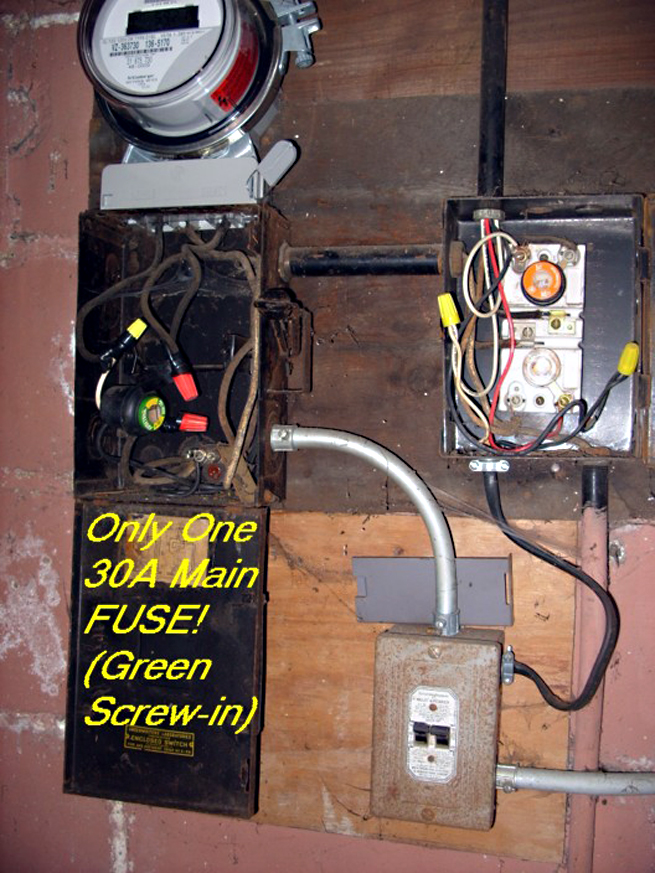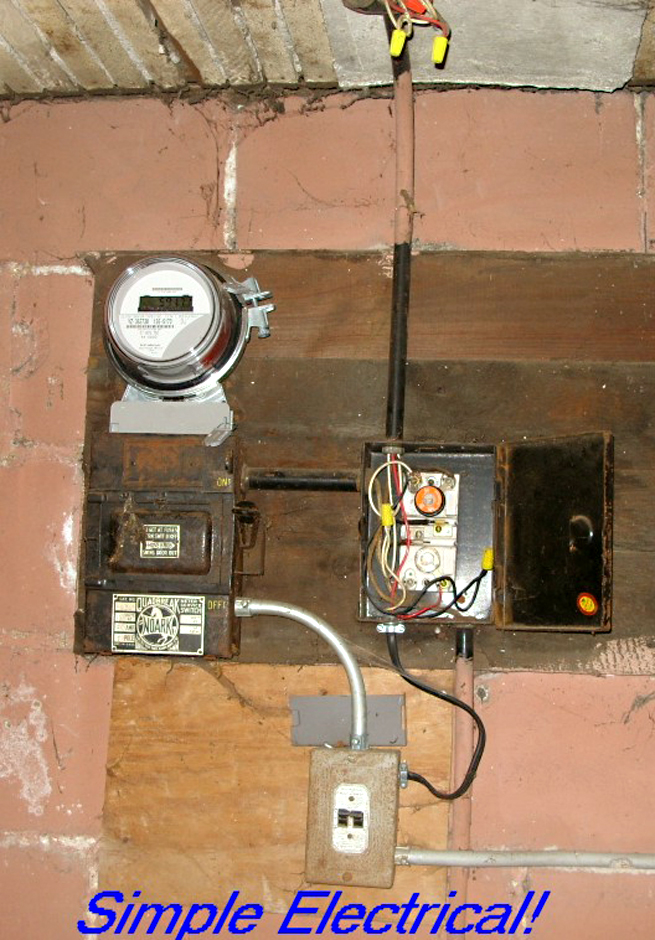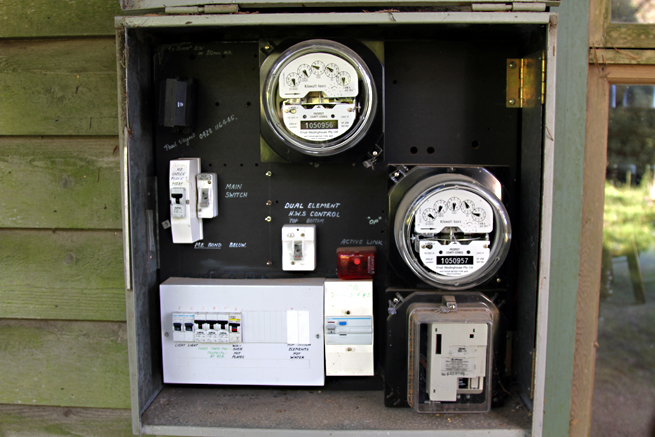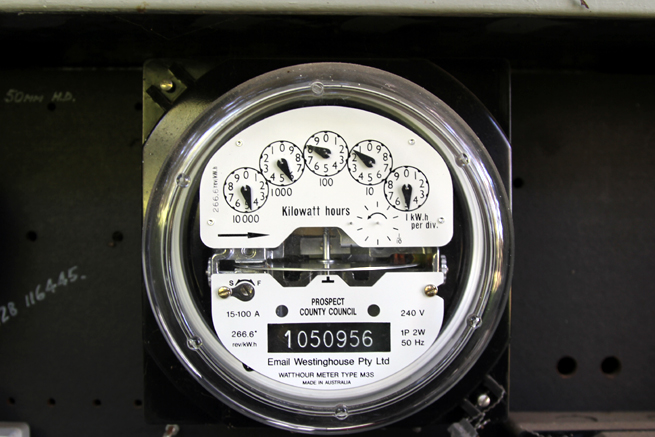Tech Talk
Forum home - Go back to Tech talk
|
another American power point Aussie style
|
|
|
Return to top of page · Post #: 16 · Written at 11:51:59 AM on 22 August 2013.
|
|
|
|
Administrator
Location: Naremburn, NSW
Member since 15 November 2005 Member #: 1 Postcount: 7564 |
|
I think the merits with the Australian pattern are the backwards compatibility, where a standard 10 amp plugtop will fit into any of the 10, 15, 20, 25 and 32 amp sockets. I read somewhere that the British pattern has two sizes and neither fit the other, either way around - you have to have the right plug, no matter what. ‾‾‾‾‾‾‾‾‾‾‾‾‾‾‾‾‾‾‾‾‾‾‾‾‾‾‾‾‾‾‾‾‾‾‾‾‾‾‾‾‾‾‾‾‾‾‾‾‾‾‾‾‾‾‾‾‾‾‾‾‾‾‾‾‾‾‾‾ A valve a day keeps the transistor away... |
|
|
Return to top of page · Post #: 17 · Written at 2:41:00 PM on 22 August 2013.
|
|
|
|
Location: Silver City WI, US
Member since 10 May 2013 Member #: 1340 Postcount: 977 |
|
"..the fuses in the plugtops make Britain's system safer. I fail to see where this is the case." |
|
|
Return to top of page · Post #: 18 · Written at 11:08:05 AM on 23 August 2013.
|
|
|
|
Location: Canberra, ACT
Member since 23 August 2012 Member #: 1208 Postcount: 587 |
|
Interesting explanations, Brad. I think Australia is quite rare in the extent to which three-phase power is pretty much the standard household connection, certainly for any new construction. |
|
|
Return to top of page · Post #: 19 · Written at 8:59:30 PM on 23 August 2013.
|
|
|
|
Administrator
Location: Naremburn, NSW
Member since 15 November 2005 Member #: 1 Postcount: 7564 |
|
To be honest I didn't realise they were heading back to three phase though it wouldn't surprise me if that was the case. ‾‾‾‾‾‾‾‾‾‾‾‾‾‾‾‾‾‾‾‾‾‾‾‾‾‾‾‾‾‾‾‾‾‾‾‾‾‾‾‾‾‾‾‾‾‾‾‾‾‾‾‾‾‾‾‾‾‾‾‾‾‾‾‾‾‾‾‾ A valve a day keeps the transistor away... |
|
|
Return to top of page · Post #: 20 · Written at 9:11:36 PM on 23 August 2013.
|
|
|
|
Location: Sydney, NSW
Member since 28 January 2011 Member #: 823 Postcount: 6890 |
|
To be honest I didn't realise they were heading back to three phase though it wouldn't surprise me if that was the case. |
|
|
Return to top of page · Post #: 21 · Written at 3:51:43 AM on 25 August 2013.
|
|
|
|
Location: Silver City WI, US
Member since 10 May 2013 Member #: 1340 Postcount: 977 |
I was just working on a house with the most meager electrical service: An old disconnect box (c.1915) gutted with a single 30-amp screw-in fuse floating on ~100-yr-old original ragwire. This would be only ~3kw service total!   Seems both the authorities & the residents were happy to countenance this situation. I advised them to install fluorescent bulbs wherever possible! |
|
|
Return to top of page · Post #: 22 · Written at 10:19:23 AM on 25 August 2013.
|
|
|
|
Administrator
Location: Naremburn, NSW
Member since 15 November 2005 Member #: 1 Postcount: 7564 |
|
Plenty of switchboards around that are still in that state here, mainly in Victorian-era mansions and terraces that line the streets of the inner suburbs. Oregon timber panel on 3x2 rough-sawn Oregon battens, screwed to the brickwork with hardwood rawlplugs. All wiring was VIR single core, double insulated drawn into in split-seam conduit which was terminated with the old 'clips all' (this name lead to the Clipsal brand we know today) junction boxes, tees and elbows. ‾‾‾‾‾‾‾‾‾‾‾‾‾‾‾‾‾‾‾‾‾‾‾‾‾‾‾‾‾‾‾‾‾‾‾‾‾‾‾‾‾‾‾‾‾‾‾‾‾‾‾‾‾‾‾‾‾‾‾‾‾‾‾‾‾‾‾‾ A valve a day keeps the transistor away... |
|
|
Return to top of page · Post #: 23 · Written at 3:28:39 PM on 25 August 2013.
|
|
|
|
Location: Silver City WI, US
Member since 10 May 2013 Member #: 1340 Postcount: 977 |
|
Yes, I was wondering about the state of some of those Row houses in Paddington, Syd. |
|
|
Return to top of page · Post #: 24 · Written at 4:43:09 PM on 25 August 2013.
|
|
|
|
Administrator
Location: Naremburn, NSW
Member since 15 November 2005 Member #: 1 Postcount: 7564 |
|
Yes, I was wondering about the state of some of those Row houses in Paddington...   Above is a photo of the standard layout of supply authority equipment in NSW. Plugin meters are no longer used but the positioning of equipment is the same throughout the state. Other states have either fallen inline with this layout or kept to their own layout, depending on which state it is. There is space at top-right for four meters (up to three for general tariff and a fourth for off-peak hot water tariff). Bottom-right is the ripple counter that allows the supply authority to turn your water heater on or off at will, usually depending on the load on their network at a given time. Top-left is what was known as the 'council fuse' but is mostly called the service fuse now, rated at 100 amps. This is what the connecting officer removes when you don't pay your bill on time. Bottom-left is the customer's equipment, usually a block of fuses or circuit breakers for various final sub-circuits. By the way, for the benefit of those not familiar with the names of some of Australia's old industrial giants, Email had nothing to do with electronic mail, but stood for Electrical Meter and Allied Industries Limited, formerly known as EMMCO, Electrical Meter Manufacturing Company, who also made Airzone radios. ‾‾‾‾‾‾‾‾‾‾‾‾‾‾‾‾‾‾‾‾‾‾‾‾‾‾‾‾‾‾‾‾‾‾‾‾‾‾‾‾‾‾‾‾‾‾‾‾‾‾‾‾‾‾‾‾‾‾‾‾‾‾‾‾‾‾‾‾ A valve a day keeps the transistor away... |
|
|
Return to top of page · Post #: 25 · Written at 5:37:17 PM on 25 August 2013.
|
|
|
|
Location: Sydney, NSW
Member since 28 January 2011 Member #: 823 Postcount: 6890 |
|
Plugin meters are no longer used |
|
|
Return to top of page · Post #: 26 · Written at 8:17:55 PM on 25 August 2013.
|
|
|
|
Administrator
Location: Naremburn, NSW
Member since 15 November 2005 Member #: 1 Postcount: 7564 |
|
We didn't get a choice. The block of flats I live in got smart meters some years ago and after all that effort I've changed provider twice (AGL are a pack of ignorant bastards and their billing system sucks and Origin are just too expensive) and none of them have ever offered me a time-of-use tariff, not that I'd take the offer anyway. I'm not paying something like 65c/kWh to cook my tea. ‾‾‾‾‾‾‾‾‾‾‾‾‾‾‾‾‾‾‾‾‾‾‾‾‾‾‾‾‾‾‾‾‾‾‾‾‾‾‾‾‾‾‾‾‾‾‾‾‾‾‾‾‾‾‾‾‾‾‾‾‾‾‾‾‾‾‾‾ A valve a day keeps the transistor away... |
|
|
Return to top of page · Post #: 27 · Written at 9:41:33 PM on 25 August 2013.
|
|
|
|
Location: Sydney, NSW
Member since 28 January 2011 Member #: 823 Postcount: 6890 |
|
most electricians are not accredited to replace meters. |
|
|
Return to top of page · Post #: 28 · Written at 12:01:56 AM on 26 August 2013.
|
|
|
|
Administrator
Location: Naremburn, NSW
Member since 15 November 2005 Member #: 1 Postcount: 7564 |
|
You did the right thing. Been door-knocked myself there and those bastards are ruthless if given half a chance to suck you in. ‾‾‾‾‾‾‾‾‾‾‾‾‾‾‾‾‾‾‾‾‾‾‾‾‾‾‾‾‾‾‾‾‾‾‾‾‾‾‾‾‾‾‾‾‾‾‾‾‾‾‾‾‾‾‾‾‾‾‾‾‾‾‾‾‾‾‾‾ A valve a day keeps the transistor away... |
|
|
Return to top of page · Post #: 29 · Written at 10:34:36 AM on 26 August 2013.
|
|
|
|
Location: Cameron Park, NSW
Member since 5 November 2010 Member #: 770 Postcount: 426 |
|
I'm sorry for wandering a bit off topic, but we have a smart meter and a heat pump hot water service. As posted earlier, the off-peak tariff for hot water does not apply, but is there any reason why a timer cannot be fitted to the HWS supply so that it only turns on at night? |
|
|
Return to top of page · Post #: 30 · Written at 3:27:18 PM on 26 August 2013.
|
|
|
|
Administrator
Location: Naremburn, NSW
Member since 15 November 2005 Member #: 1 Postcount: 7564 |
|
but is there any reason why a timer cannot be fitted to the HWS supply so that it only turns on at night? ‾‾‾‾‾‾‾‾‾‾‾‾‾‾‾‾‾‾‾‾‾‾‾‾‾‾‾‾‾‾‾‾‾‾‾‾‾‾‾‾‾‾‾‾‾‾‾‾‾‾‾‾‾‾‾‾‾‾‾‾‾‾‾‾‾‾‾‾ A valve a day keeps the transistor away... |
|
|
You need to be a member to post comments on this forum.
|
|

Sign In

Vintage Radio and Television is proudly brought to you by an era where things were built with pride and made to last.
DISCLAIMER: Valve radios and televisions contain voltages that can deliver lethal shocks. You should not attempt to work on a valve radio or other electrical appliances unless you know exactly what you are doing and have gained some experience with electronics and working around high voltages. The owner, administrators and staff of Vintage Radio & Television will accept no liability for any damage, injury or loss of life that comes as a result of your use or mis-use of information on this website. Please read our Safety Warning before using this website.
WARNING: Under no circumstances should you ever apply power to a vintage radio, television or other electrical appliance you have acquired without first having it checked and serviced by an experienced person. Also, at no time should any appliance be connected to an electricity supply if the power cord is damaged. If in doubt, do not apply power.
Shintara - Keepin' It Real · VileSilencer - Maintain The Rage

 (early 1950's?) dual breaker box added to primitive installation (lower right) is a Westinghouse with breakers permanently attached to its Art Deco metal cover (unusual!).
(early 1950's?) dual breaker box added to primitive installation (lower right) is a Westinghouse with breakers permanently attached to its Art Deco metal cover (unusual!).